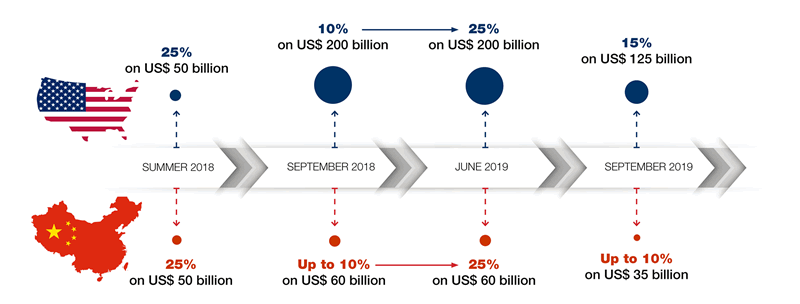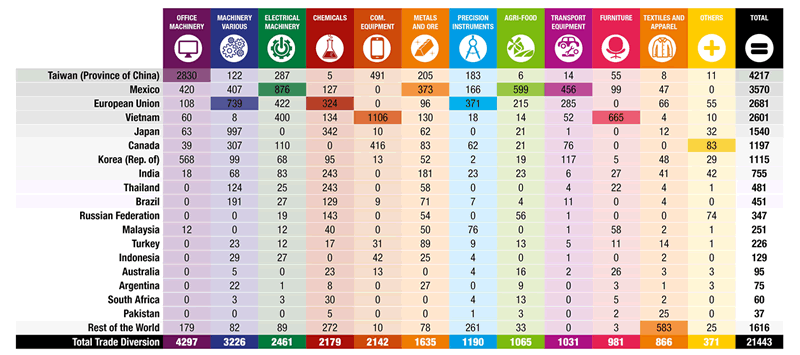Tariffs imposed by the United States on China are economically hurting both countries, UNCTAD warnes in a new paper released
The study, Trade and Trade Diversion Effects of United States Tariffs on China, shows that the ongoing US-China trade war has resulted in a sharp decline in bilateral trade, higher prices for consumers and trade diversion effects (increased imports from countries not directly involved in the trade war).
By analysing recently released trade statistics, the study finds that consumers in the US are bearing the heaviest brunt of the US tariffs on China, as their associated costs have largely been passed down to them and importing firms in the form of higher prices.
However, the study also finds that Chinese firms have recently started absorbing part of the costs of the tariffs by reducing the prices of their exports.
“The results of the study serve as a global warning. A lose-lose trade war is not only harming the main contenders, it also compromises the stability of the global economy and future growth,” cautioned UNCTAD’s director of international trade and commodities, Pamela Coke Hamilton. “We hope a potential trade agreement between the US and China can de-escalate trade tensions.”
The analysis shows that US tariffs caused a 25% export loss, inflicting a US$35 billion blow to Chinese exports in the US market for tariffed goods in the first half of 2019.
This figure also shows the competitiveness of Chinese firms which, despite the substantial tariffs, maintained 75% of their exports to the US.

Evolution of the US-China Trade War
The office machinery and communication equipment sectors were hit the hardest, suffering a $15 billion reduction of US imports from China as trade in tariffed goods in those sectors fell by an average of 55%.
Trade of tariffed goods in sectors such as chemicals, furniture, and electrical machinery also dropped substantially according to the analysis.
Though the study does not examine the impact of the most recent phase of the trade war, it warns that the escalation in summer of 2019 is likely to have added to the existing losses.
While it does not consider the impact of Chinese tariffs on US imports, the study indicates that qualitative results are most likely to be analogous: higher prices for Chinese consumers, losses for US exporters and trade gains for other countries.
While China loses, other economies gain
US tariffs on China have made other players more competitive in the US market and led to a trade diversion effect.
Of the $35 billion Chinese export losses in the US market, about $21 billion (or 63%) was diverted to other countries, while the remainder of $14 billion was either lost or captured by US producers.

Trade Diversion Effects in the US Market by Economy and Sector, First Semester 2019
(Millions US dollars)
According to the report, US tariffs on China resulted in Taiwan (province of China) gaining $4.2 billion in additional exports to the US in the first half of 2019 by selling more office machinery and communication equipment.
Mexico increased its exports to the US by $3.5 billion, mostly in the agri-food, transport equipment and electrical machinery sectors.
The European Union gained about $2.7 billion due to increased exports, largely in the machineries sectors.
Viet Nam’s exports to the US swelled by $2.6 billion, driven by trade in communication equipment and furniture.
Trade diversion benefits to Korea, Canada and India were smaller but still substantial, ranging from $0.9 billion to $1.5 billion.
The remainder of the benefits were largely to the advantage of other South East Asian countries.
Trade diversion effects favouring African countries have been minimal.























